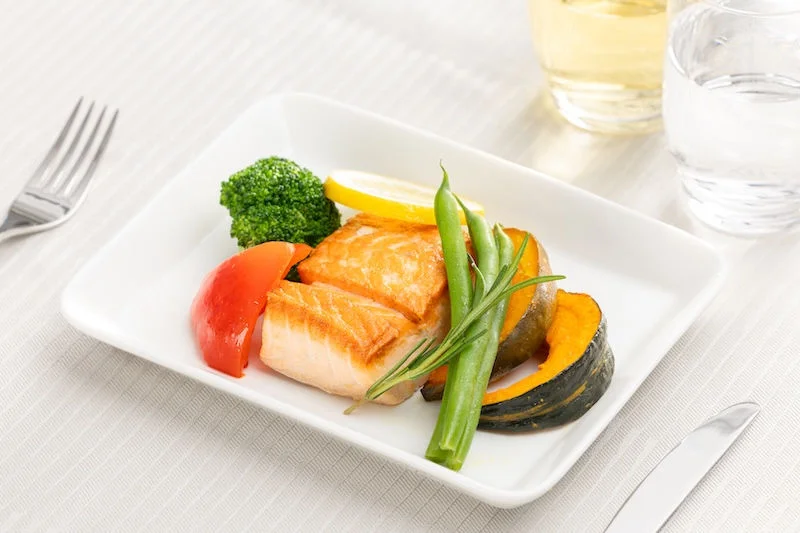Korean Air has updated its special dietary meal options across seven categories, working with nutrition experts from Inha University Hospital over six months to develop the new menus.
The changes, effective September 1, focus on current health trends and address passenger feedback about taste and variety. All cabin classes can request the meals up to 24 hours before departure.
Key changes
Low-calorie and diabetic meals now include more vegetables and fewer carbohydrates, with lean proteins replacing red meat where possible. Bland meals feature softer fruits like watermelon and pear – additions passengers specifically requested.

Gluten-free options now utilise rice flour instead of wheat flour, with stricter controls in place to prevent cross-contamination from commercial products.
Low-salt meals limit sodium to 400mg per serving, using herbs and aromatics for flavour instead of salt.
The lactose-free breakfast switched from soy milk to lactose-free Greek yogurt based on passenger preferences.
Industry context
Korean Air’s collaboration with medical professionals suggests they’re taking nutrition more seriously than just avoiding certain ingredients.
The six-month development timeline and university partnership indicate this wasn’t just a menu refresh – it’s an overhaul based on clinical dietary guidelines for conditions like diabetes and cardiovascular disease.
Airlines typically treat special meals as a compliance requirement rather than a competitive advantage. Korean Air’s approach suggests they see these passengers as worth investing in.
Images courtesy of Korean.
Nik founded Inflight Feed in 2012, blending his passion for inflight dining with over a decade of experience in the airline industry. For the past 13 years, he has travelled the world, exploring and reviewing airline meals across countless carriers.
CNN Travel, The New York Times, and BBC World News have featured Nik’s expertise. When he’s not on the ground, you’ll find him at 35,000 feet, camera in hand, capturing the unique flavours of air travel. Follow his inflight meal adventures on Instagram: @InflightFeed.

